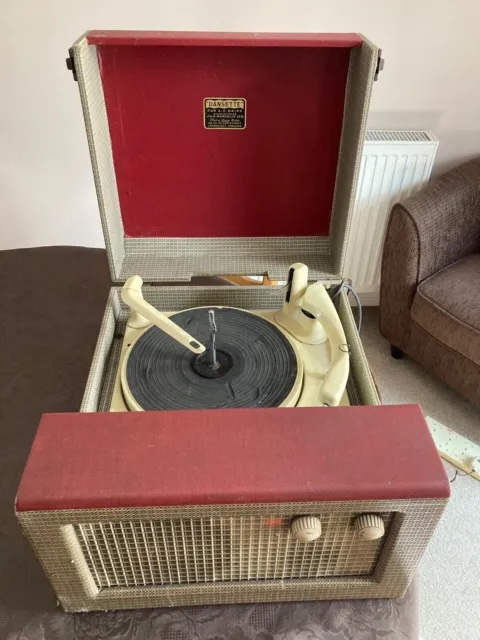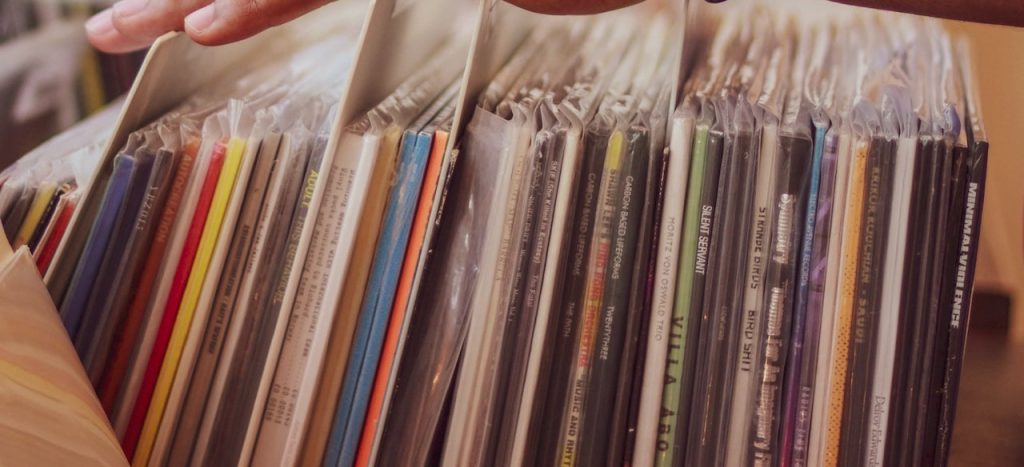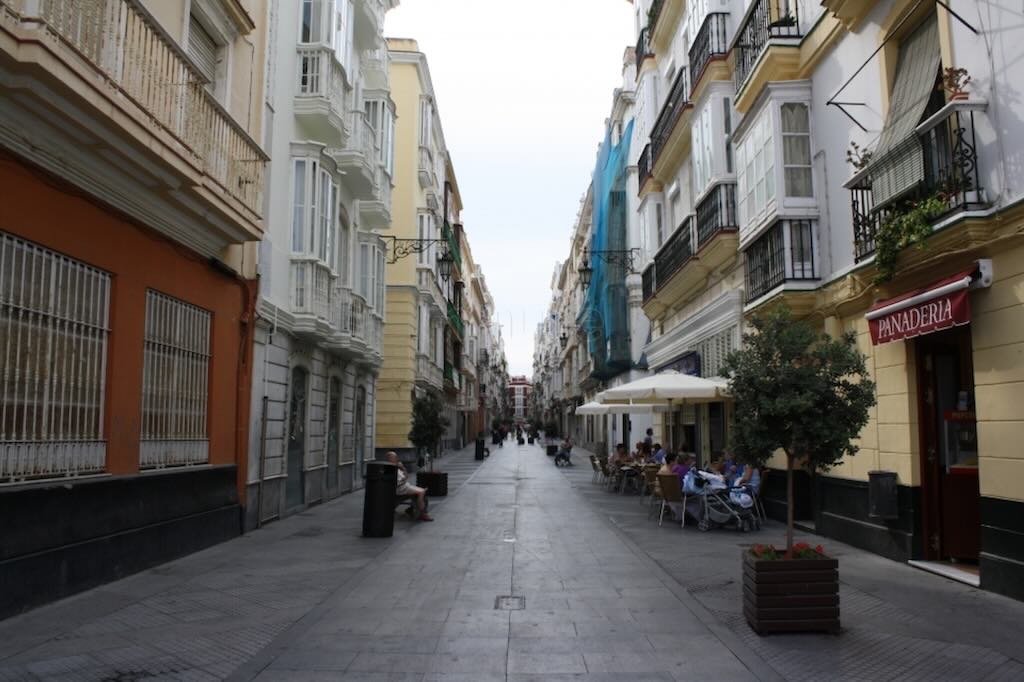This post was inspired by my old vinyl collection. Remember vinyl just means polyvinyl chloride, and the plural of vinyl is vinyl, like sheep or fish.
My small collection of 70-odd albums (some double albums) all dated from the 60s and 70s. In 1982 I started to buy audio CDs, and my vinyl collection was relegated to a shelf in the garage. It included one vinyl that my wife had (but she never had a record player), and yet it didn’t include the very first vinyl I bought in 1964.
My little collection was home to a few songs that still evoked a feeling, emotion,…, associated with a moment, event,…, in my life (i.e. an autobiographical episode). Fortunately all these events involved a pleasant feeling (and occasionally a little stressful).
However, more often than not, a particular vinyl record was simply associated with a period in my life, and not a specific event or moment.
But come the 2020s, it was time to take a cold, hard, look at them, and decided if my vinyl collection was important to me. The tracks that I enjoyed on one or other vinyl, I now have in my online music collection. Do I need to keep a vinyl ‘original’? What does a vinyl ‘original’ mean anyway? Do I need to keep a vinyl that no longer gives me any emotional or intellectual satisfaction? Do I need to keep a vinyl with a particular track, when I actually now listen to that song recorded live with a stronger emotional charge. Or re-recorded or re-mastered later with a far better quality? Would I have to buy a record player, again?
I think you know the answer. This post details how vinyl defined the music I liked and disliked, but today my little vinyl collection no longer had any impact at all on my online music collection and what I listen to in the car!
In this post I look at the creation of my vinyl collection through to about 1970, and a second post looks at the slow demise of my vinyl collection in the period 1971-1982.
What is a vinyl record?

Many people will think that this question is irrelevant or even stupid. My entire vinyl collection was bought before the appearance of the music CD, so they are real vinyl records. In fact no records in my vinyl collection had been played since mid-1984.
Certainly by 1960 the 7″ vinyl (played at 45 rpm) and the 12″ vinyl (played at 33⅓ rpm) were the de facto storage and playback formats for both classical and popular music.
Buying and owning a vinyl was originally a very physical experience. You went to a record shop, and you could listen to the record in a small sound cubicle (I think headphones appeared with the music CD, ca. 1982).
The vinyl, with its sleeve (or jacket), was treated much like a book. You were told to store them vertically, like books, and never pile them one on the other. Like book covers, the album covers were often works of art, and included details about each track, and often the lyrics were included as well.
The inner sleeve was even more important than the outer sleeve. Some people immediately changed the inner sleeve for soft plastic, or plasticised paper, or even a light rice paper, always designed to protect the surface of the record. The aim was to avoid micro-scratches appearing on the record surface. These could be created by a poor quality inner sleeve provided by the record company.
It was vital to never touch the playing surface of the record, e.g. oil from the fingers would affect the playback. And dust specks could also stick to the surface, and later produce micro-scratches. The record had to be held with the outside non-playing edge resting on the palm of the hand, and a finger on the label or hole in the middle. Then with the other hand you used the palm to ‘hold’ the opposite outer edge of the record. This meant that the record was held in between the two palms, but only touching the outside edge of the record. You then centred the hole over the spindle on the record turntable. You gently let go of the record and let it slide down the spindle to sit comfortably on the platter. Now the record was ready to play.
So you could only touch a vinyl record on the non-playing outer edge and in the centre where the label was situated. Naturally you had to go through a similar handling routine to remove the record, place it back in its inner sleeve, and finally slide it into the outer sleeve.
For some people this handling routine was part the ‘musical experience’, for others it was a pain-in-the-neck, and for others it was an obstacle course that always ended with the addition of another micro-scratch on the playing surface.
Before playing the record, you could use a special anti-static brush to remove any dust and dirt. You could also give the record a clean with an anti-static cloth before putting it back into its inner sleeve.
The next challenge was to actually put the stylus on the record. You had to make sure the playing surface was level, and you had to ensure that the tonearm had the right ‘tracking force‘, i.e. just enough pressure (using the balance weight) to pick up the movement across the record surface, but not too much to damage the surface. And too little pressure might mean that the needle didn’t track properly and it would slide across the record surface causing permanent damage.
There were elaborate discussions about direct-drive turntables, i.e. were they the best way to provide the correct constant rotation speed? Others used a special test record to adjust the turntable speed.
And of course there were ongoing discussions about the ‘cartridge’, the needle that actually touched the record surface. Which one to use, how often did they need to be changed, and how to change and realign them?
And we don’t have enough space to mention the world of pre-amplifiers, amplifiers, loudspeakers, etc. (my system was based upon the Quad ESL-63).
Everyone was fighting to keep their vinyl records clean and free from scratches. And almost everyone failed. There was a constant pressure to find ways to improve the recording process and avoid background noise at playback. The audio CD was the industry answer to those problems. Naturally, even in 1982, people complained about ‘lifeless’ recording (read digital and not analogue), and about audio CD playback being too ‘academic’, and still today people continue to complain about ‘soulless’ online music playback.
The amazing thing is that you can still buy ‘modern-day’ vinyl records, but people are actually just listening to CD masters cut onto vinyl. These vinyl records are nothing more than fashion statements.
The reality is that the nature of the playback format doesn’t matter, and there is nothing magical about vinyl. What counts is that people enjoy the music, and good music can’t be defined simply by the playback technology.
Likes and dislikes
I’ve never bothered to over-analyse my musical likes and dislikes, but I guess that classical music offers a wider spectrum of mood descriptives corresponding to the emotional tone created by the composer, lyricist or performer. Descriptives such as triumphant, majestic, dignified, cheerful, tranquil, merry,…, or emotions such as excited, happy, relaxed, sad,… come to mind.
Oddly, popular music tends to offer (in my mind) a different set of mood descriptives, such as fun, upbeat, inspirational, hard-hitting, touching, fragile, …
Writing this post has forced me to think about how I relate to music, and in particular what I like and dislike. It’s easy to simply say “I know what I like, and what I dislike”. But the reality is that my tastes (likes and dislikes) have changed quite dramatically over time (and are still changing today).
However, a ‘deep core’ of ‘likes’ still exists, and they don’t require a justification, and can not be questioned (there are also a few ‘dislikes’ in there as well).
Then there is a halo around that ‘core’ which is more fluid. I look back and find that I’m now disappointed with one or other past unconditional ‘like’ (The Doors and Mountain come to mind). Equally there are today some really strong ‘likes’ that once were relegated to ‘boring’ or even the ‘dislike’ category (David Bowie and Queen come to mind).
Vinyl vocabulary
Catalogue Number – is a manufacturers reference number found on the record and sleeve. Separate versions of the same release will usually have different catalogue numbers e.g. a coloured vinyl version will have a different catnumber from the black vinyl version.
Coloured vinyl – Most records are black, but there are occasional records of different colours.
Die-cut Sleeve – A sleeve with a hole in the centre.
Download Code – Usually a slip of paper/card included in the packaging of the vinyl, and that allows you to download a digital copy of the record onto your device.
Flipback Sleeve – A record cover held together with card flaps that fold from the front to the back of the cover.
Envelope Picture Sleeve – Picture sleeve that has an envelope foldover flap.
Foldout Sleeve – A sleeve which folds out. These normally open out to reveal a poster.
EP – An extended play disc that has four or more tracks. EP’s usually come in a picture sleeve. Maxi-Single. In the 70’s Maxi-Single meant an EP.
Etched Disc – A one-sided vinyl record with laser-etched graphics on the other side.
Gatefold Sleeve – A sleeve that opens out like a book.
Inner Sleeve – Protective sleeve held inside the main cover that houses and protects the record.
Lead-in Groove – The quiet area at the very beginning edge of a record. The area at the end of the record playing surface between the end of the recording and label is often called Dead Wax (or Run-Out Groove).
Locked Groove – Is where the inner groove on a vinyl record forms a closed loop, which traps the tonearm preventing it from going any further. It means that the music can play as a loop (to stop the loop you need to move the tonearm forward with your bare fingers).
LP – Long Playing Vinyl Record.
Matrix Number – This is an alphanumeric code scratched or stamped into the run-out groove area of a gramophone record. It can provide a source of useful information about the edition of a record.
Picture Disc – A disc that has a picture sealed within clear vinyl.
Quadrophonic – Four-channelled playback system from the 1970s.
Shaped Disc – A record that is shaped and not circular.
Shellac – Breakable material that was used for 78rpm records.
Sleeve (also Jacket) – The external pocket into which the inner sleeve is inserted. A picture sleeve is used to house the vinyl record and its inner sleeve. An art sleeve has a pictorial drawing on it, rather than a photo. A company sleeve is a standard non-picture single sleeve with the record label logo printed on it. An embossed sleeve is where the printing press is used to create a mound or bump in the artwork of the sleeve.
Spine – The thin edge of the record sleeve which usually contains artist name, title of record and catalogue number.
My first vinyl
My first vinyl was a Beatles single A Hard Day’s Night (it would appear I never kept the original record). I remember I bought it when it was still a ‘hot single’, so probably sometime in the summer of 1964 (I was nearly 13). I have no idea why I bought this particular record. I didn’t like the Beatles and I didn’t like that specific tune, and I didn’t have a record player. I certainly didn’t see the film of the same name, and I didn’t like the B-side either (Things We Said Today). Maybe I bought it for Mum and Dad. My parents had some kind of record player, and my sister recently reminded me that our parents enjoyed Celtic music. So I might have been trying to educate my Mum and Dad in ‘modern’ music trends, a truly lost cause.
Later I bought Nights in White Satin by The Moody Blues, released in 1967. I almost certainly bought other ‘singles’, but this is the only one I appear to have kept. Initially The Moody Blues impressed me with Go Now, but after Nights in White Satin they became a bit too ‘sophisticated’ for my taste (dare I write arty-farty).
What is rather surprising is my persistent memory of music from the 1950’s. I can’t imagine my parents collecting the discs of Chuck Berry, Richie Valens, Elvis Presley, Jerry Lee Lewis, Louis Armstrong, etc., yet I have well entrenched memories of songs such as Johnny B. Goode (1958), La Bamba (1958), Sweet Little Sixteen (1958), Shake, Rattle and Roll (1954), Rock Around the Clock (1952), Great Balls of Fire (1957), Catch a Falling Star (1957), Poetry in Motion (1961), C’Mon Everybody (1958), and on top of my list there is Smokestack Lightnin’ (1956) from Howlin’ Wolf. The amazing things is that all these songs make me ‘feel good’, and as someone once sang “can’t explain“. Nothing sophisticated, just feel good.
Much later I would meet and marry Monique, the love of my life. And she liked music she could dance to, starting with the 1950s.
Butlins, September 1967
Another event that impacted considerable on my early taste in music (and not just in music) was a summer holiday in Butlins Bognor Regis, 2-9 September 1967.
Four of us, myself, Paddy Kelly, Willie Nast and Roger Morris went on holiday together. This particular week was just after the summer holidays, so in school time, (i.e. we were the only ‘school kids’ still in the camp). Our parents were aware of this, and we had told our teachers, etc., but we still “got it in the neck” when we returned to school. But the ‘experience’ gained was well worth the hassle. We were all ‘nearly 16’, being all born in the early months of the academic year. For me it was a life-changing experience.
Purely in terms of music, my musical tastes were certainly affected by the camp disco. You have to remember that summer 1967 was the Summer of Love (lucky us). This obviously meant The Mamas & the Papas singing San Francisco (Be Sure to Wear Flowers in Your Hair). But it also saw the release of Sgt. Pepper’s Lonely Hearts Club Band and the Magical Mystery Tour, the Small Faces with Itchycoo Park, Eric Burdon & The Animals with Winds of Change, Jefferson Airplane with Surrealistic Pillow, Cream with Disraeli Gears, and The Byrds with Younger Than Yesterday.
But top of my list from Butlins was Procol Harum with A Whiter Shade of Pale, and perhaps even more importantly Serge Gainsbourg and Jane Birkin with “Je t’aime… moi non plus” (even if it was written for Brigitte Bardot).
Bath Music Festival, June 1970

Certainly in those early years (through to summer 1970) going to live concerts was an important way to decided on what I liked and didn’t like. Can’t really explain it, but listening to a vinyl or watching Top of the Pops (started in 1964) just didn’t convey the energy and ‘impact’ (for want of a better word) of a live performance.
I was most impressed with Mott the Hoople live at Friars in Aylesbury. It’s not on their concert and tour history, but it’s on the Friars site. I don’t remember exactly when, but from what I’ve read, it was maybe 8 December 1969 or 2 February 1970. This was pre-All the Young Dudes, but I still remember the shock of really feeling the music through the floor, it was just fantastic. Since then I’ve always liked music played loud!
I think I had been to Friars in the summer of 1969 (don’t remember the date) to see (I think) King Crimson. I know I also went to Friars, always in Walton Street, to see Van Der Graaf Generator but I’m not sure if that was before or after seeing Mott the Hoople. In any case the vibrations up my legs sold me on Mott the Hoople, and later I also saw them in London post-All the Young Dudes, and was just as impressed.
Woodstock took place in Bethel, New York, United States, 15-18 August 1969. I’ve no idea how I found out about the festival, but it obviously was the reason why some of us went to the Bath Festival of Blues and Progressive Music, held in Shepton Mallet, Somerset, England on 27–29 June 1970. I’m (almost) sure we drove there in an old orange VW van with a white Michelin man on the top. I am certain that I was one of the lucky ones, and could doss down in the back of the van.
I’m also almost certain that Patrick (Paddy) Kelly was with me, and I’m kind of sure that William (Willie) Nast was there as well (I don’t think Roger Morris came with us).
Frankly I don’t remember much. But I do remember that it rained, we were a long way from the stage, that everything and everyone was late, and maybe (just maybe) we saw Santana and Jefferson Airplane whilst leaning against some kind of metal fence or railing. It’s also possible that it was there that I picked up a liking for Canned Heat. But overall, I didn’t like the open-air concert format. I preferred the intensity created within a confined space.
Cinema going
During those formative, pre-18, years, there were quite a number of films that really impressed me. Sure the list is incomplete, but it certainly included:-
- With Lawrence of Arabia (1962) I have this lasting impression of a vast, awe-inspiring, beautiful film. But I must have only been 11 years old at the time, so maybe I saw this film later in my youth. I guess this is also true for Dr. No (1962), The Pink Panther (1963) with Peter Sellers at his best, The Great Escape (1963), and From Russia with Love (1963), possibly the best James Bond film.
- On the other had I can still feel being in the cinema watching Goldfinger (1964), another great James Bond film. And then came For a Few Dollars More (1965) and The Good, the Bad and the Ugly (1966).
- Watching, and enjoying, A Man for All Seasons (1966), I felt for the first time really adult (at the age of 14) and able to appreciate a historical film without the usual Jame Bond antics.
- Blowup (1966) included a cameo of The Yardbirds. I remember thinking that this was a film for adults, and if I could get to see it when I was still only 14 years old, then I could go a see any film in the future.
- The Graduate (1967) was a new topic for me, and with some great music. I always felt that Anne Bancroft (Mrs. Robinson) looked the part (blasé, sophisticated, but with a cold, nasty character), and that Katherine Ross (playing her daughter Elaine) was the typical stupid, spoilt brat and a product of a dysfunctional household (and of the US in general).
- Bonny and Clyde (1967) was much appreciated at the time, but looking back I felt that Faye Dunaway had no sex appeal.
- 2001: A Space Odyssey (1968), simply epic. I actually went out and bought the soundtrack.
- Barbarella (1968), worth watching just for the young Jane Fonda. And I was even more impressed by her in the film Klute (1971).
- Easy Rider (1969), I think they were right to call this film a “touchstone for a generation” (at least for My Generation…).
- M*A*S*H (1970), a great black comedy war film.
Just as telling, I’ve never sat and watched Ben-Hur (1959), Psycho (1960), Doctor Zhivago (1965), Bullitt (1968), or Midnight Cowboy (1969). I did watch most of Bullitt about 10 years ago, just to see the car chase. Not sure why, but also I never saw A Clockwork Orange (1971), The Godfather (1972) or The Exorcist (1973).
In fact I am pretty sure I never went to the cinema during 1971-74, and moving to Italy in late-1974 didn’t improve things. Later I made the mistake and went to see both The Terminator (1974) and Rocky (1976) dubbed in Italian, but thankfully we missed Jaws (1975). We did go to see Alien (1979) in Italian, and it’s where I learned that Monique, the love of my life, didn’t like horror films. In 1979 we also saw Apocalypse Now, and I also learned that Monique didn’t like war films or noisy films either. Surprisingly Monique did like the first Star Wars film (1977), which we saw in Leicester Square, during one of our visits to London.
Leaving Italy in 1982, our cinema going was reinvigorated because we had access to films in the original language version, just with subtitles. We saw films like ET (1982) and the Dead Poets Society (1989), and Monique loved Blade Runner (also 1982). Later we saw films as varied as Home Alone (1990) and The Matrix (1999), but we fortunately avoided Jurassic Park (1993) and Titanic (1997). For us cinema going was always more about an evening out with friends followed by a pizza. The COVID-19 pandemic put a definitive stop to our cinema going.
Building a vinyl collection (pre-1970)

Some time between the ages of 14 and 18 I must have acquired a record player. I have the vague impression of a grey portable record player with some red edging, or something (a bit like the one seen above). But I do remember that it had an odd way to stack records, and an automatic routine that moved the tonearm back and forth and dropped the next record on to the platter (certainly not hi-fi). This was in the days when many recordings were mono, and stereo was so new it was marked on the record cover.
I’ve mentioned buying a Beatles single A Hard Day’s Night (1964) and Nights in White Satin (1967) by The Moody Blues. I’ve also mentioned the music from the 1950’s with Chuck Berry, Elvis Presley, Jerry Lee Lewis, etc., but in writing this post I started to wonder about what (and when) did my likes and dislikes first started to crystallise?
I’m more and more convinced that moment was in 1964 with Boom Boom, House of the Rising Sun, and above all Don’t Let Me Be Misunderstood by The Animals. They followed up with We Gotta Get Out of This Place and It’s My Life in 1965, and Don’t Bring Me Down in 1966. Who knows, was it their gritty, bluesy sound, their look, or just a ‘coming of age’ thing? Yet today if I had to sketch a group I would front it with ‘ordinary looking’ Eric Burdon (certainly not Jim Morrison).
Not sure when, but I would later buy “The Early Animals with Eric Burdon” (1973), presumably to try to re-capture that initial primal instinct (I failed).
After the Bath festival I was impressed by the American blues and rock band Canned Heat, so its not surprising that I had “Boogie with Canned Heat” (1968) in my vinyl collection, which included the wonderful On the Road Again (but not my other favourites Going Up the Country and Let’s Work Together).
“Blind Faith” is the only studio album by the English supergroup Blind Faith, originally released in July 1969. I still remember having to hide the cover from Mum and Dad. A great, great album, and I think that the vocals of Steve Winwood really made this a super-classic. In my online collection I had Cream with Spoonful, Sunshine of Your Love, Tales of Brave Ulysses, White Room, and a live recordings of Rollin’ and Tumblin’ and Crossroads. From the Blind Faith vinyl I have a soft spot for Can’t Find My Way Home and Had to Cry Today.
I also bought the double-album “History of Eric Clapton” (1972), which had the odd arrangement of having sides 1 and 3 on one record, and sides 2 and 4 on the other record. The history started with The Yardbirds song I Ain’t Got You (1964) and finishes with Layla (1970).
One of my earliest LP’s was The Rolling Stones “Through the Past, Darkly” (Big Hits Vol. 2), from September 1969. I’ve no idea why I didn’t also have Big Hits Vol. 1, but it may be because I liked the subversive 1968 track Street Fighting Man (still do). With The Rolling Stones I always found that the studio recorded versions lacked punch, and I always prefer live recordings, which transmit more vigour and ‘clout’. In fact in the 60s I was not a big fan of either The Beatles or The Rolling Stones. Now in my online collection I enjoy listening to Jumping’ Jack Flash, Sympathy for the Devil, and above all Gimme Shelter.
Another of my early LP’s was The Beach Boys 1970 album “Good Vibrations“, a compilation with Sloop John B, Surfer Girl, California Girls, and Barbara Ann. It’s amazing how they managed, in my mind, to define the American dream girl. This compilation was again released in 1974 by Capitol Records, but my 1970 record was from EMI Italiana.
We always think of this period as being ‘defined’ by The Beatles or eventually the Rolling Stones, but in many ways it was groups like The Byrds that defined the US music scene. Remember “Mr. Tambourine Man” from 1964, then came “I’ll Feel a Whole Lot Better“, “All I Really Want to Do“, “Turn! Turn! Turn!“, “Eight Miles High“, “Younger Than Yesterday“, and “So You Want to Be a Rock ‘n’ Roll Star“. It was for this music that I bought, eyes closed, the “Sweetheart of the Rodeo” album (1968), which I did not like at all. I eventually ‘recovered’ when I bought the 1973 double album “History of The Byrds“.
No self-respecting vinyl collection, no matter how small, had to included the double album Electric Ladyland by The Jimi Hendrix Experience. It had Voodoo Chile, All Along the Watchtower, and another version of Voodoo Child (Slight Return). I’m also a big fan of Voodoo Chile by Stevie Ray Vaughan, and the totally fantastic version by Luna Lee.
I also bought Jimi Hendrix “Birth of Success” (1973), which had a live version of (I Can’t Get No) Satisfaction.
Another vinyl that was a classic in any collection, was L.A. Woman (1971) by The Doors. At the time this was one of the most played records in our digs in Blackheath Village. I loved Love Her Madly (no surprise there) and I still like Riders on the Storm, but somehow, this vinyl represents my changing tastes. When I now listen to Jim Morrison, I find he lacked grit and emotion in his voice, it’s all too staged and academic. Possibly even more telling, is the vinyl “The Best of Mountain” (1973). The hard rock I once enjoyed, I now find just too noisy and repetitive.
One of the best ways to listen to new and different groups was to buy samplers, i.e. compilations of different artists.
The “Rock Machine Turns You On” (1968) was the first sampler. It included Time of the Season by The Zombies, Scarborough Fair by Simon and Garfunkel, and Flames by Elmer Gantry’s Velvet Opera.
The second sampler was “Rock Machine I Love You” (1968), and it included Somebody to Love by one of the great female singers of the period, Grace Slick (and The Great Society). To top it all there was Turtle Blues by Big Brother and the Holding Company with the fantastic Janis Joplin. I wonder if this was the track that put her on my list of unconditional favourites.
The third sampler was double album “Fill Your Head with Rock” (1970), with tracks from Chicago and Santana. There was The Garden of Jane Delawney by Trees with the singer Celia Humphris, and fantastic virtuoso A Small Fruit Song by Al Stewart. I was also impressed with I Love Everybody by Johnny Winter.
I was, and always have been, willing to take a punt on something outside my comfort zone. It might not sound much, but one of my favourite vinyl records was “Francoise Hardy Sings About Love” (1968). Just that combination of angelic looks and soft French accent hit me where it counted. Later when I first saw and spoke to my future French wife, Monique, I felt that I had been waiting for that moment.
Another punt was “Marmalade 100° Proof” a 1969 compilation. It was not as interesting as I had expected, but it did include the underrated (in my opinion) Let the Sunshine In with Julie Driscoll and Brian Auger and the Trinity. Julie Driscoll was famous for her version of This Wheel’s on Fire.
A third, less than successful punt, was Tim Rose “Through Rose Colored Glasses” was released in 1969. I suspect I bought this disc on the basis of Tim Rose’s 1967 version of Hey Joe, and possible also Morning Dew.
Janis Joplin
I mentioned in the introduction that my likes and dislikes have changed since the 1960s. But I also wrote that I had a ‘deep core’ of ‘likes’ that don’t require a justification, and cannot be questioned.
Sitting deep in that space is Janis Joplin, and the group Big Brother and the Holding Company. I can listen to her singing for hours, but my wife would kill me (she hated Janis Joplin and more generally any noisy rock band). My vinyl collection included:-
- Cheap Thrills (1968) with Summertime, Piece of My Heart and Ball and Chain.
- Be A Brother (1970)
- Pearl (1971) with Get It While You Can
- Joplin in Concert (1972)
Disliking the Beatles and Rolling Stones
In early 2025 someone put out “Is the most hated Beatles song really that bad?” It reminded me of why, as a teenager, I disliked the Beatles. In hindsight, it was simple. John Lennon, knew how to write good songs (Strawberry Fields Forever, Lucy in the Sky With Diamonds, Revolution, Come Together), and I liked the timbre and tone of his voice. And I didn’t like the overly sugary lyrics and voice of Paul McCartney. It would appear that the most hated tune was Maxwell’s Silver Hammer, although I might throw my vote in also for Ob La Di Ob La Da.
In the mid-60s I felt that you had to pick either the Beatles or the Rolling Stones. And I found the Stones a bit ‘tinny’, whereas the later ‘live’ recordings were far more punchy and bluesy.
The one thing I hated, and still hate, is ‘sugar coated’ pop, from groups like The Monkees, Herman’s Hermits, The Lovin’ Spoonful, Gerry and the Pacemakers, The Turtles, etc. (and I refuse to add links to this rubbish).
Fortunately in the mid-60s the ‘need’ to be either a “mod” or “rocker” had faded, and I could ‘like’ The Who, without having to get a Lambretta festooned with chromed lights, mirrors, badges, and antennas.
Future
I wrote this post when I was together with Monique, the love of my life, in a care home. She passed away on 23 December 2023.
I have no idea how this will impact my musical tastes. I miss her so much that I am sure my likes, dislikes, tastes, and every other part of my existence will be permanently affected.
I can no longer listed to Janis Joplin singing A Woman Left Lonely, without seeing Monique lost somewhere, frightened, and waiting for me to come to her.









